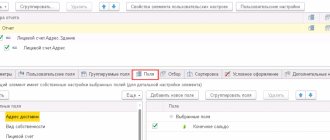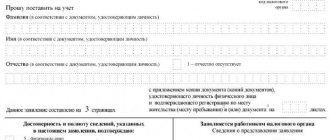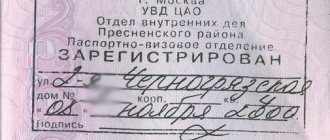HOAs (homeowners' associations) are created in accordance with the provisions of Art. 135 of the Housing Code of the Russian Federation. Such associations are designed to ensure management of the common property of the owners of an apartment building. The Civil Code of the Russian Federation classifies these partnerships as non-profit organizations (clause 4, paragraph 3, article 50 of the Civil Code of the Russian Federation). Homeowners' associations can independently choose the taxation regime - OSNO or USN. The latter option, especially with the “income minus expenses” object, is more attractive, as it simplifies the accounting process and reduces the number of taxes paid. The procedure for switching to the simplified tax system is regulated by Art. 346.13 Tax Code of the Russian Federation.
Accounting in HOAs - “simplified”: 2021 postings for target revenues
The HOA is created as a legal entity, therefore, it is obliged to maintain accounting and tax records to record all business transactions, determine the reliable amount of the financial result, and control the flow of funds.
The partnership must report to regulatory authorities, pay wages to employees within the generally established time frame, and transfer insurance premiums.
HOA cash receipts include:
- entrance and membership fees for homeowners;
- payments by residents of an apartment building (apartment building) for consumed utilities;
- subsidies from the budget for specific work, major repairs, etc.;
- remuneration for intermediation between resource supply companies and consumers of their services;
- other types of income.
For HOAs, membership fees, budget earmarked funds for major repairs, and other targeted revenues from HOA members and the budget are not taxable income. These funds are accounted for in account 86, intended to reflect targeted financing. In this case, it is necessary to keep separate records of targeted income and expenses - the procedure for maintaining it is reflected in the accounting policy of the HOA.
When money is credited, account 86 is credited in tandem with the debit of account 50 (if the payment was accepted in cash) or account 51 (for non-cash payments). To account 86, HOAs can open different sub-accounts, which will ensure differentiated accounting of income from different sources, for example:
- for subaccount 86.1 - membership fees from property owners in the apartment building;
- Account 86.2 can be used to record revenues in the form of budget subsidies, etc.
The analytics also highlight the provision of discounts and benefits to certain categories of residents, and the receipt of subsidies from different types of budgets.
All accruals of contributions to the HOA from members of the partnership are recorded using the posting Dt 76 Kt 86.
The fact that an organization receives money from homeowners is recorded by debiting accounts 50 or 51 and crediting account 76 (if we are not talking about contributions for major repairs).
The current expenses of the HOA for the implementation of statutory activities, made at the expense of targeted revenues, are reflected by posting Dt 20 (or 26) Kt 60 (or 76), then the costs are written off to the debit of account 86 from the credit of account 20 (or 26). But the use of cost accounts when writing off such expenses by a partnership using simplified accounting methods is not necessary - in accordance with clause Information of the Ministry of Finance (PZ-1/2015), HOAs can write off costs to account 86 without first recording them on accounts 20, 26.
Income and expenses that are not taken into account when taxed with the “simplified” single tax are not reflected in the KUDiR.
How many accountants does a management company need?
The management company can keep records independently (in a standard way) and outsource it. In the first case, a chief accountant and several specialists are hired. Some companies work with one accountant. But this practice cannot be recommended as optimal.
The chief accountant of the management company needs to control accounting in all areas, monitor cash discipline, analyze tax policy, introduce changes to the accounting scheme in order to avoid errors for which tax penalties are charged. It also includes financial analysis, communication with internal and external users of accounting information, support of audits, inspections, preparation of consolidated reporting, control of transfers to the budget and settlements with employees, control of the reflection of business transactions in accounting and the generation of documents on receivables and payables. The need to separate functions and responsibilities among accounting areas is obvious.
Outsourcing accounting allows the management company to optimize the costs of maintaining a staff of specialists. All functions are assumed by a specialized performer. Responsibility for the quality of accounting and reporting also lies on his shoulders.
Accounting for overhaul costs
The costs of major repairs of apartment buildings can be covered from contributions from homeowners - members of the HOA or with the involvement of budget subsidies, which are reflected in accounting separately from other resources:
- funds intended for major repairs are transferred to a separate account, which is reflected in accounting by the entry: Dt 55 Kt 50;
- if the money comes from members of the HOA, then in accounting the amounts of membership subsidies are first calculated (Dt 76 Kt 86), after which the receipt of money is reflected and transferred to a special account through correspondence Dt 55 Kt 76;
- the amounts of budget subsidies are reflected by the posting: Dt 55 Kt 86;
- at the next stage, as contractors carry out work as part of the overhaul of an apartment building, records will be made of the expenses incurred: Dt 20 Kt 60;
- payment for contractors’ services is fixed by transferring funds from a special account: Dt 60 Kt 55.
Adjustment of mutual settlements in 1C: Accounting in housing and communal services management companies
Adjusting mutual settlements changes personal account balances by agreement.
You can find it in the Service Charges
Adjustment of mutual settlements offers us three types of operations:
- debt transfer;
- debt write-off;
- other adjustments.
To determine which type of adjustment of mutual settlements is suitable for our case, let’s ask ourselves the question: “Does the old owner have a debt or overpayment under his agreement?”
⇨ For the answer, let’s turn to the Universal Report.
We will build a report that will help us check current personal account balances by agreement, and in the future will be able to tell us whether adjustments to mutual settlements were made correctly.
To build a report, go to Reports
—
Universal report
.
Let's build a report on the accumulation register with settings as in the screenshot below
For example, let's look at personal account 002. We changed the owner in it and using this report we will check the balances on it.
We see that there are balances under the old and new agreements.
The owner has changed, but the debt on the old agreement remains.
This situation could arise for various reasons. The main reasons include:
- The old owner did not pay his debt (or we did not pay the resulting advance);
- The debt was paid, but the payment fell on the new contract.
In these cases, balances on two contracts for one person can lead to a number of difficulties.
For example, when calculating penalties. If we are left with an old contract with a balance, a situation may arise in which we have a debt on the old contract, and an overpayment arises on the new contract.
In such a situation, offset of advances for housing and communal services
will not be able to offset the debt and overpayment. This is due to the fact that the balances are on different contracts.
Important!
In the payment card or in the report on accruals and debts, we will not see the debt on the personal account. In the report we will see the total balance of the personal account, that is, in our case, we will see an overpayment on the personal account.
At the same time, according to the old agreement, the personal account has a debt, and the program will accrue penalties for this debt.
This situation can also cause difficulties when loading GIS housing and communal services: duplication of contracts will lead to duplication of services when uploading payment documents.
To avoid these and many other difficulties, it is necessary to correctly determine the required type of adjustment.
Thus, based on the report, we determined that there is a balance under the old owner in our example.
Now, using the diagram below, we will determine what to do next.
Transfer of debt
Let's consider adjusting mutual settlements with the type Transfer of debt
.
Let's create a document Adjustment of mutual settlements
and select the type of operation
Debt Transfer
, as in the screenshot below.
Such an adjustment allows you to transfer a debt from one personal account to another or transfer balances within one personal account from one agreement to another.
In the line Debtor
in the document we establish the personal account from which the balances will be transferred.
In the line Creditor
indicate the personal account to which the balances need to be transferred.
If we transfer balances within one personal account from an old agreement to a new one (as now), then the Debtor
and
Creditor
will be filled in with one personal account.
Next to the line Creditor
We also indicate the contract to which we want to transfer the balances. In our case, this is the New Agreement (screenshot below).
After all the data is filled in, click the Fill
.
The document will be filled with data on the tabs . Magnification
and/or
Debt reduction
.
In our example, the document was filled out on two tabs.
Next, if we need to transfer the entire balance, we post the document and re-check the balances.
If you need to transfer only part of the balance, you need to delete the extra lines and leave what you want to transfer. In this case, the amount can be edited manually.
After the transfer is completed, we will build a Universal report and check the balances.
Important!
A universal report must be built for the month in which the adjustment was made.
At the beginning of the period, you must indicate the day following the day the adjustment was made
We see that the remainder of the old contract has been transferred to the new one and is equal to the report on accruals and debts.
After adjustment, we see one agreement on the personal account.
HOA accounting – postings for commercial services
HOAs must account for commercial income separately from target income in accounting. The tax base of the partnership under the simplified tax system, which is recognized as revenue, can be formed by the following receipts:
- maintenance, repair work on objects that do not belong to the common property of the apartment building (for example, repair of equipment in an apartment);
- replacement of pipes, plumbing, repair of sockets and electrical appliances;
- comprehensive apartment renovation;
- cleaning of office premises, private apartments, furniture cleaning;
- paid assistance in preparing redevelopments in apartments;
- provision of consulting services;
- payment for renting premises, advertising on the territory or property of an apartment building, etc.
Income from services rendered is reflected as revenue in account 90.1 on debit and credit. Expenses are accounted for in account 20, and analytics are carried out in different subaccounts of this account. The set of subaccounts used by the partnership for each type of account must be fixed in the working chart of accounts, which is approved by the accounting policy of the HOA.
Transactions in HOAs on a “simplified” basis for the provision of individual paid services to homeowners in apartment buildings:
- Dt 50, 51 Kt 62 - remuneration received from the tenant for the service provided;
- Dt 62, 76 Kt 90.1 - income is recognized as partnership revenue.
Next, the debit of account 20 accumulates the costs that form the cost of the service. When writing off the cost, an entry Dt 90.2 Kt 20 is made for the total accumulated amount in the subaccount of account 20 for the corresponding service. The final operation will be the derivation of the financial result with the preparation of correspondence: Dt 90.9 Kt 99.
Registers
The registers were created specifically to make it easier for specialists to navigate current HOA policies. In fact, registers are an important part of the partnership’s activities, which serve to systematize primary documents and their subsequent preservation.
Each register is designed to reflect all business transactions carried out. This is reflected directly in the organization’s accounting accounts. Information stored in registers is considered a trade secret.
Since registers are important financial documents, they regulate a special procedure for storing and maintaining information. So, in the register you need to indicate:
- name and details of the register;
- name of the business entity;
- listing of all accounting objects;
- data on the currency of monetary transactions;
- listing of persons responsible for operations;
- Full name and signature of the person responsible for the conduct.
Postings when making payments for utilities
Amounts for payment of “utilities” received by the HOA from residents for services provided by third-party organizations do not form taxable income on the simplified tax system, if the partnership then transfers these amounts to suppliers - resource supply organizations, MSW management operators (clause 4, clause 1.1 of Art. 346. 15 Tax Code of the Russian Federation, letter of the Ministry of Finance No. 03-11-06/2/40525 dated June 14, 2018).
If the partnership acts as an intermediary between resource supply companies and homeowners (recipients of utility services), receiving remuneration for this, such remuneration is recognized as taxable income of the HOA. How in this case is the accounting of the HOA carried out using “simplified” – postings:
- Dt 76 Kt 60 – charges have been made for utility services, which consumers - homeowners must pay;
- Dt 76 Kt 90 – the amount of remuneration of the HOA for mediation between resource suppliers and consumers;
- Dt 50 (or 51 for non-cash payments) Kt 76 - funds accepted from apartment owners to pay for utilities and agent fees for the HOA;
- Dt 60 Kt 51 – the debt between the HOA and resource suppliers has been repaid.
Payment for utility services that the partnership provides to the owners independently is fully included in the taxable income of the HOA:
- Dt 62, 76 Kt 90.1 – fees were charged for utilities provided by the partnership;
- Dt 50, 51 Kt 62 – payment for utilities was received from the owners.
Maintaining
Members of the partnership can pay for utilities:
- through a bank account;
- in cash departments of Sberbank;
- directly to the partnership cash desk;
Any of these forms of payment arrangement is permitted by law.
But the following points must be taken into account:
- If payment is made through the HOA cash desk, then a cash book must be kept, and a receipt must be issued to the person who paid.
- All financial transactions must use a specific form.
- Only the amount of money agreed with the bank can be in the cash register. All finances beyond these limits must be submitted to the bank;
The basis for financing the HOA is targeted income: membership and entrance fees, rent. This is a distinctive feature of the partnership as a non-profit entity and will occupy a central place in accounting.
However, an HOA can also engage in commercial activities.
It could be:
- rental of premises;
- accruals on interest on securities;
- payment for the provision of any services, carrying out any work;
- other methods;
In this case, money received from these sources must be used only with the consent of the entire meeting of the partnership.
This activity also needs to be clearly tracked in accounting documents.









